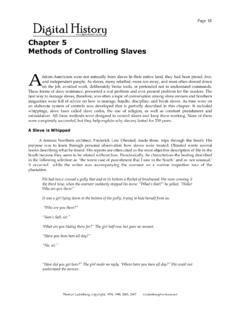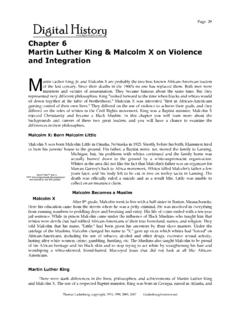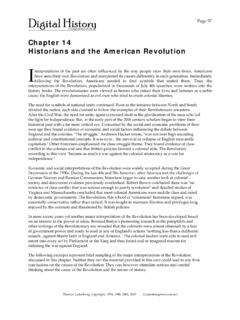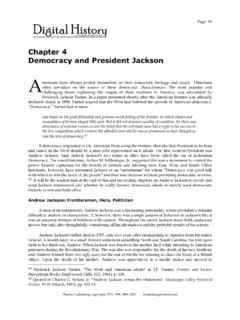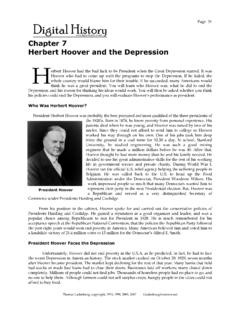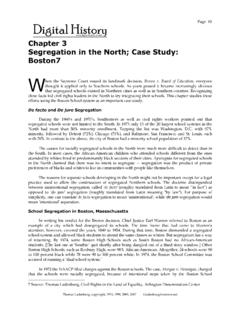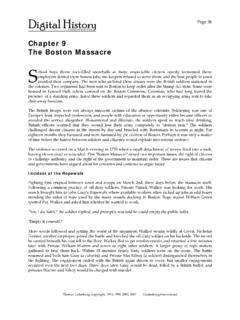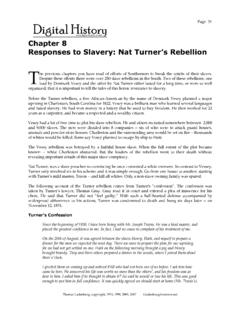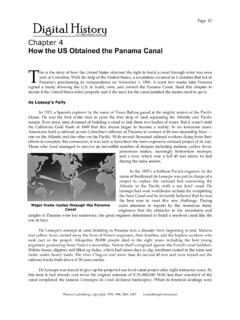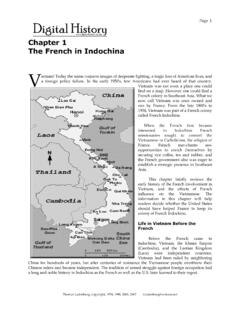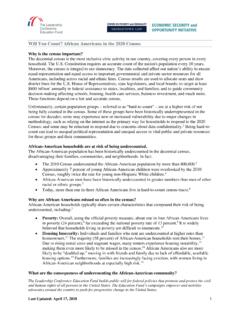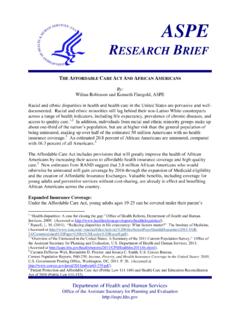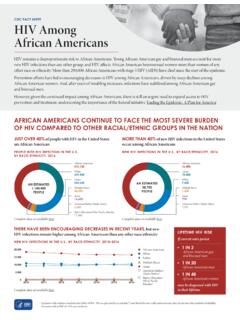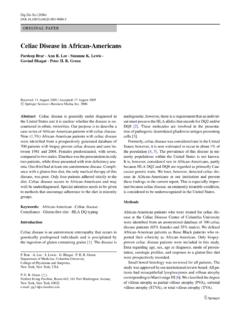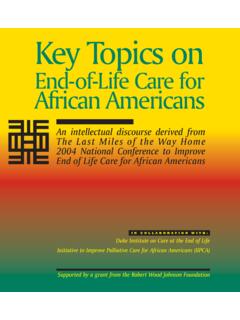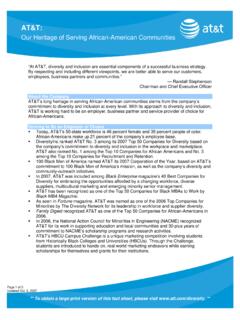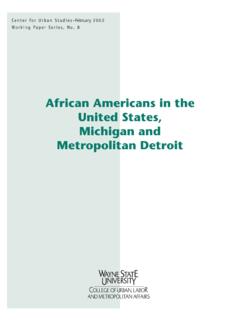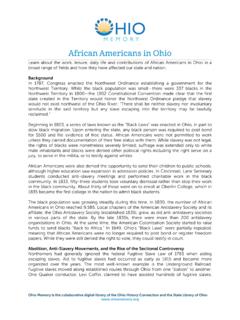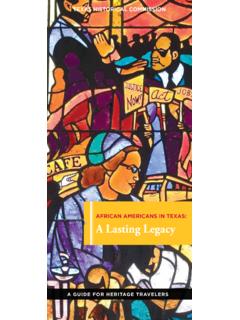Transcription of Chapter 7 The African-American as Sharecropper I
1 Page 31 Thomas Ladenburg, copyright, 1974, 1998, 2001, 2007 Chapter 7 The African-American as Sharecropper n 1865 and 1866, some northern friends of the freedmen urged that they be given farms of their own. President Andrew Johnson did not simply ignore this suggestion, he went much further and turned the land back that had been already given to former slaves under the Confiscation Act of 1862 to its original owners. The emphasis during Congressional Reconstruction was on protecting the freedmen s right to vote. With the collapse of Congressional Reconstruction, the former slaves were once again denied the right to vote, equal protection under the law, and land to own and farm.
2 Forced to find employment where they could, the vast majority had no choice but to work on their former owner s plantation at his terms. Thus, freedom for african -Americans meant exchanging the condition of the slave for the life of the Sharecropper or tenant farmer. The poverty of these former slaves would be visited upon the families of their sons and their grandsons. This Chapter examines the economic legacy of black Americans and raises the question whether they should have been given land as well as freedom.* Luther Mills Becomes a Sharecropper On January 1, 1866, nine months after the Civil War ceased, two Mississipians came before an officer of the Union army.
3 One was a planter named L. P. Thomson who wanted to be sure that the cotton in his field would be harvested. Accompanying Thomson was Luther R. Mills, a Negro which he lately owned." No longer a slave, Mills had to provide for his wife Martha and their three young children. Thomson and Mills had come to write a contract on a form provided by the Freedman s Bureau. Thomson agreed to provide the Mills family, free of charge, with clothing and food of good quality and sufficient quarters and medical attention when necessary, and kind and humane treatment, and a patch for garden purposes. In exchange for this, Mills agreed to work for Thomson during the following year.
4 Mills signed the contract with an X, for he could neither read nor write. Why did Luther Mills agree to work for his former master under conditions so similar to his servitude? The main reason is that he could not find work anywhere else, and he could not buy a farm for himself. Fifty years later, neither Luther Mills and nor his descendants were able to own their own farms, and for that matter, neither were 90 per cent of all african -Americans who were either sharecroppers or tenant farmers. Sharecroppers and Tenants A Sharecropper did not own his own farm; nor did he own house, mule, or tools. Instead, he rented these from his landlord. The landlord allowed croppers to farm his land, usually about 10 acres, in exchange for 1/3 of the crop.
5 For use of a mule, the seeds, and the tools, the cropper frequently paid another third. Since he owned the land, the landlord could order the planting of a money crop, usually cotton or tobacco, and could prevent croppers from planting vegetables, which they might eat or sell on the sly. Croppers seldom made improvements on the farms, which they did not own, and landlords frequently let the farms, which they didn t live on, fall into disrepair. With from 1/3 to 2/3rds of the crop going to the landlord, there was little incentive to work as hard as the business of farming required. * A preliminary discussion on this issue can be found in Chapter 2.
6 , Land and the Freedman. IPage 32 Thomas Ladenburg, copyright, 1974, 1998, 2001, 2007 Like the Sharecropper , a tenant farmer did not own the land he worked. Instead, he paid a yearly cash rental. He had more incentive to improve his condition because he could keep his earnings after paying the rent. Like the cropper, however, he frequently had to borrow money and often had to put a lien on his crop. The Crop Lien System A lien is a loan with goods or produce as the security. Cash was scarce after the Civil War, and few banks were open (those that were seldom did business with poor farmers), so most croppers and tenants obtained credit from the local merchant or storekeeper.
7 The merchant advanced supplies such as food, clothes, or tools, (never cash) in return for a mortgage or lien on the farmer s crop. In the most typical cases, the farmer pledged his unplanted crop at the county store each spring. The merchant kept the books and charged a rate of interest per year (usually about 37%). The African-American farmer seldom asked to see his account, even if he could understand the credit system or add the numbers. Challenging either the skills or the integrity of the white man was not tolerated in the South. Sharecroppers and crop-lien farmers usually had to confine their business to the local store until their loans were paid. They were allowed to plant only those crops that did not compete with the provisions they were supplied.
8 Since farmers always sold their crops in the fall when prices were low, bought at the high price of the local merchant, paid a 37% rate of interest, and never got to inspect the books, they usually ended the year owing money. To use the local language, they failed to pay out and began the next planting even deeper in debt. Under slavery in 1860 almost all african -Americans worked either as farm laborers or as house servants. Thirty years later, in 1890, 21% were servants and 56% were farmers. By 1930, only one in ten remaining in the South owned the land they worked. Emancipation did mean freedom, but freedom for african -Americans often meant continuing to work the white man s land or to work in his house.
9 Seventy Years Later: The Slave s Grandson The real meaning of the sharecropping and crop lien system some seventy years after slavery is described in the following passage. Tom, the young man depicted here, was 12 years old in 1932 and would have been 80 in 2000. His son or grandson would probably have left the cotton fields of Alabama and moved to some city in the North: Tom is a black Sharecropper s child in Alabama. His family (father, mother, and four children) all work for the landowner. They are all in debt to him (they get $75 worth of supplies for the growing season, but he keeps the books), and they all live in a two-room cabin supplied by the landowner. Poverty and sharecropping went hand in-hd Page 33 Thomas Ladenburg, copyright, 1974, 1998, 2001, 2007 The cabin sits close to the ground, with a single layer of boards for a floor.
10 One window, or window hole, lights each room (no glass, a wooden shutter instead). The roof leaks so badly that when the last baby was born, the mother had to move her bed three times. It has bare walls, without paper or plaster, and you can see daylight between the cracks. There is no stove, only an open fireplace. Outside there is no fence or garden (the landlord says that the cotton must be grown up to the doorstep ), no well, because the creek is so near and an outhouse. Here Tom lives and works. At the age of twelve, he has been picking cotton for half of his life. Tom is awakened or pulled out of bed at 4 o clock in the summer by his older brother.
